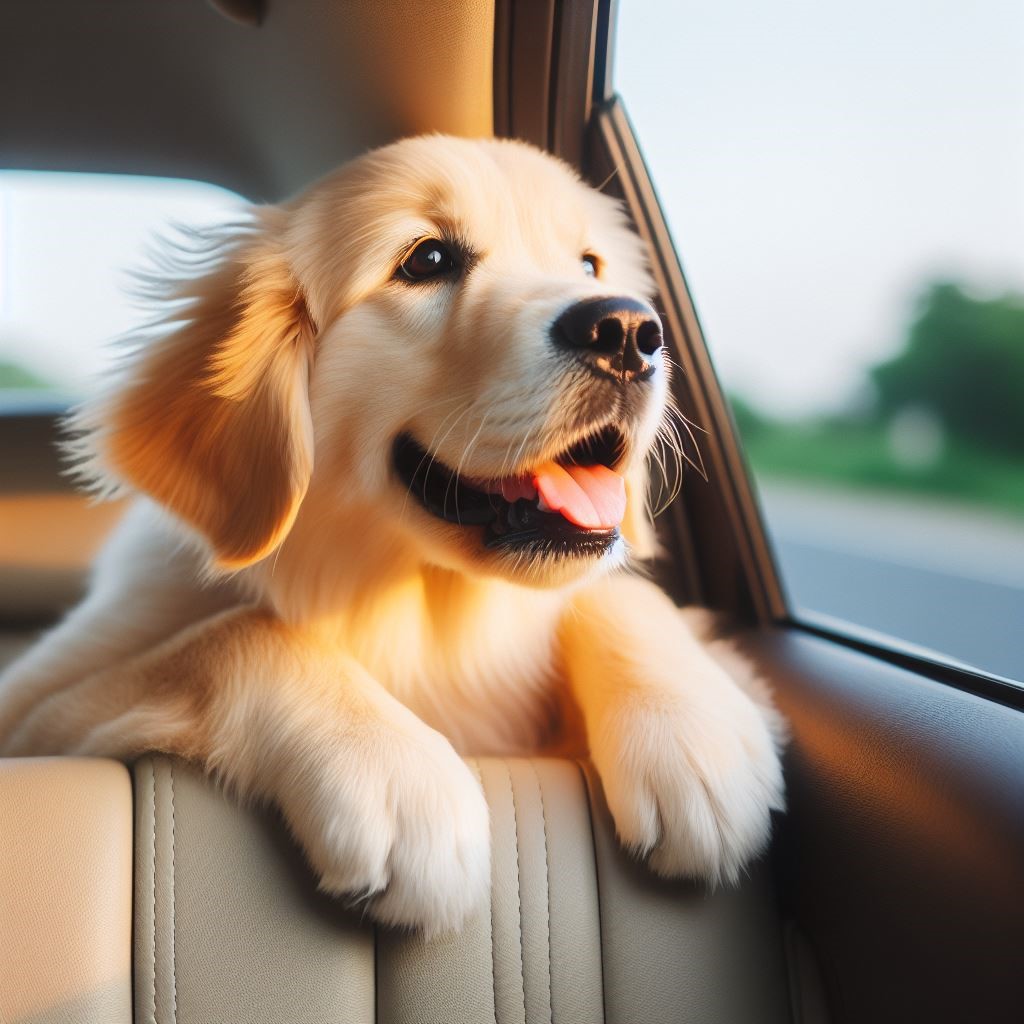Ensuring the safe and comfortable transport of our canine companions, be it a short jaunt to the local vet or a transcontinental journey, demands meticulous planning and a commitment to their welfare. Throughout this article, I delve into the essential best practices for transporting dogs, addressing scenarios spanning from nearby trips to global relocations, all with a steadfast focus on meeting the unique needs of our beloved pets.
Proper Restraints: When traveling by car, it’s essential to restrain the dog safely. This can be achieved using a sturdy crate or a dog seat belt. Loose dogs in a moving vehicle pose a significant risk to themselves and others in the car.
Adequate Ventilation: Ensure that the car is well-ventilated to prevent overheating, especially in warm weather. Crack open windows slightly to allow fresh air to circulate through the vehicle.
Comfort Items: Bring along familiar items such as blankets or toys to provide comfort to the dog during the journey. Familiar scents can help alleviate stress and anxiety.
Short Breaks: If the journey is long, schedule short breaks to allow the dog to stretch its legs, relieve itself, and hydrate. Always keep the dog on a leash during pit stops to prevent escapes.
National Transport:Plan Ahead: Research pet-friendly accommodations along the route if the journey involves an overnight stay. Not all hotels accept pets, so it’s crucial to make arrangements in advance.
Health Documentation: Ensure that the dog’s vaccinations and health records are up-to-date, especially if traveling across state lines. Some states require a certificate of veterinary inspection for dogs entering the state.
Comfortable Crate: If traveling by air or train, invest in a sturdy and comfortable crate that meets the requirements of the transportation provider. Proper crate training beforehand can help the dog acclimate to its temporary enclosure.
Hydration and Nutrition: Provide access to water and food during rest stops to keep the dog hydrated and nourished. Avoid feeding a large meal immediately before travel to prevent motion sickness.
International Transport:Research Import Requirements: Each country has its own regulations regarding the importation of dogs. Research the specific requirements well in advance and ensure compliance with vaccination, microchipping, and quarantine protocols.
Health Certificates: Obtain the necessary health certificates and documentation from a licensed veterinarian. These documents typically include proof of rabies vaccination and a certificate of good health issued within a specified timeframe before travel.
Quarantine Considerations: Some countries require incoming dogs to undergo quarantine upon arrival. Plan for this possibility and make arrangements for the dog’s care during the quarantine period.
Choose a Reputable Transport Provider: When transporting a dog internationally, consider using a reputable pet relocation service that specializes in handling the intricacies of international travel with pets. These professionals can navigate complex regulations and ensure a smooth journey for your dog.
Whether traveling locally, nationally, or internationally, transporting a canine companion requires careful planning, attention to detail, and consideration for the dog’s well-being. By following best practices such as proper restraints, adequate ventilation, and health documentation, pet parents can ensure a safe and comfortable journey for their furry friends. Remember to research regulations and seek guidance from professionals when traveling across borders to minimize stress and ensure a smooth transition for both you and your dog.



I’m truly impressed by your deep insights and superb ability to convey information. Your expertise shines through in every piece you write. It’s evident that you put a lot of effort into understanding your topics, and the results is well-appreciated. Thanks for providing such valuable insights. Keep up the great work!
Thank you for another informative web site. Where else could I get that kind of info written in such a perfect way? I’ve a project that I’m just now working on, and I’ve been on the look out for such info.